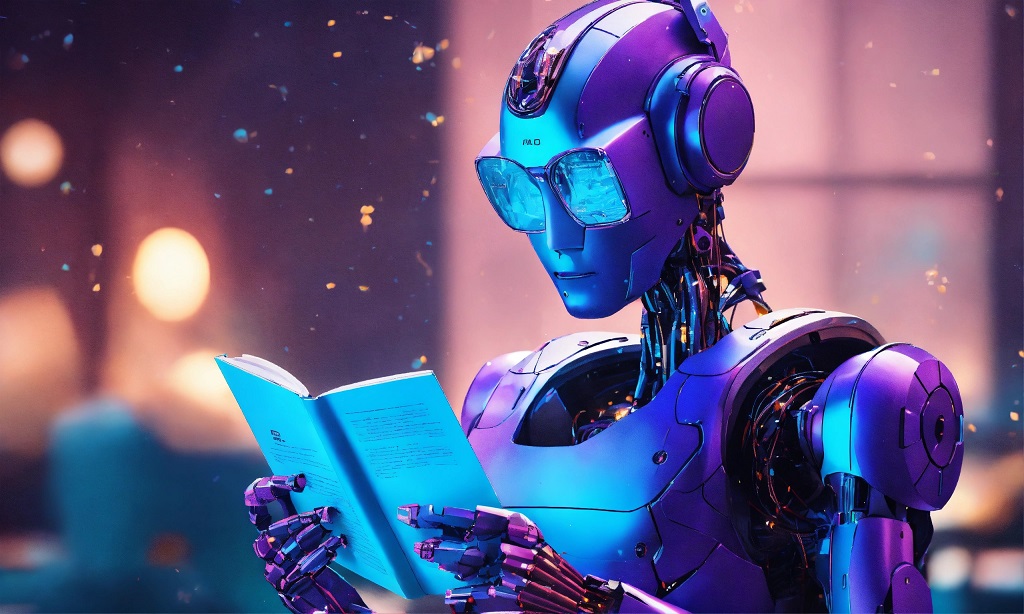- trending-title
- What Is Blockchain Technology and How Does It Work?
- 7011214217
Artificial Intelligence (AI) has emerged as a transformative force across various industries, and its impact on education is nothing short of revolutionary. In an era where technology is reshaping traditional paradigms, the integration of AI in education has the potential to enhance learning experiences, personalize instruction, and prepare students for a future defined by innovation. In this in-depth exploration, we delve into the myriad ways educators, institutions, and students can harness the power of AI to usher in a new era of educational excellence.
1. Understanding AI in Education: A Paradigm Shift Before delving into implementation, it's crucial to understand the essence of AI in education. AI encompasses machine learning, natural language processing, and data analytics, all working together to create intelligent systems capable of adaptive learning and decision-making. This paradigm shift opens doors to personalized learning experiences tailored to individual needs and preferences.
2. Personalized Learning Paths: Catering to Individual Needs One of the primary advantages of leveraging AI in education is the ability to provide personalized learning paths. AI algorithms analyze individual student performance, identify strengths and weaknesses, and tailor learning materials to address specific needs. Adaptive learning platforms, such as DreamBox and Knewton, use AI to create a customized learning journey for each student, ensuring optimal engagement and understanding.
3. Intelligent Tutoring Systems: AI as a Virtual Educator AI-driven intelligent tutoring systems act as virtual educators, offering real-time feedback, assistance, and guidance. These systems adapt to each student's pace and style of learning, fostering a supportive and interactive environment. Carnegie Learning and Smart Sparrow are examples of platforms utilizing AI to enhance tutoring and mentorship in various subjects.
4. Automated Grading and Assessment: Streamlining Evaluation Processes AI simplifies the grading and assessment process for educators, enabling faster and more accurate evaluation. Automated grading systems, like Gradescope, use AI to assess written assignments, quizzes, and exams, allowing teachers to focus on providing targeted feedback and fostering student growth.
5. Data-Driven Decision-Making: Enhancing Educational Strategies AI's data analytics capabilities empower educators and administrators with valuable insights into student performance, engagement levels, and learning patterns. By analyzing this data, institutions can make informed decisions to optimize curriculum design, identify areas for improvement, and implement evidence-based teaching strategies.
6. Virtual Classrooms and AI-Powered Chatbots: Redefining Communication AI-driven virtual classrooms and chatbots streamline communication between educators and students. Virtual classrooms, exemplified by platforms like Zoom and Google Meet, leverage AI for efficient collaboration and seamless online learning experiences. AI-powered chatbots, such as IBM Watson Assistant in education, provide instant support, answering queries, and guiding students through various processes.
7. Language Processing for Learning Disabilities: Inclusive Education AI's natural language processing capabilities contribute to inclusive education by assisting students with learning disabilities. Tools like Read&Write and Ginger Software use AI to support students with dyslexia, providing features such as text-to-speech, word prediction, and grammar checking to enhance comprehension and expression.
8. Smart Content Creation: AI as a Teaching Assistant AI can serve as a valuable teaching assistant in content creation. Platforms like Canva and Lumen5 leverage AI to assist educators in generating visually appealing presentations, videos, and other educational materials. This not only saves time but also enhances the overall quality of instructional content.
9. Predictive Analytics for Student Success: Early Intervention AI's predictive analytics capabilities enable early intervention to support student success. By analyzing historical data, AI systems can identify students at risk of academic challenges or dropout. Institutions can then implement targeted interventions, such as additional support or personalized resources, to mitigate potential issues and foster student success.
10. Gamification and AI: Enhancing Engagement Integrating gamification principles with AI enhances student engagement and motivation. AI-powered adaptive learning platforms, like Kahoot! and Quizizz, use gamified elements to create interactive and enjoyable learning experiences. This approach not only makes learning more enjoyable but also promotes active participation and knowledge retention.
11. AI in Language Learning: Personalized Language Acquisition - AI plays a significant role in language learning by offering personalized and adaptive experiences. Duolingo, for example, uses AI algorithms to tailor language lessons based on individual progress and proficiency. This ensures that learners receive targeted instruction and practice, accelerating language acquisition.
12. Ethical Considerations: Balancing Innovation with Responsibility As the integration of AI in education advances, it's imperative to address ethical considerations. This includes ensuring data privacy, maintaining transparency in AI algorithms, and fostering equity in access to AI-powered educational resources. Striking a balance between innovation and ethical responsibility is crucial for the responsible deployment of AI in education.
13. Professional Development for Educators: AI as a Collaborative Partner AI not only benefits students but also supports educators in professional development. AI-driven platforms, like Squirrel AI and Century Tech, provide insights into teaching strategies, offer resources for skill enhancement, and contribute to the continuous growth of educators in the digital age.
14. Overcoming Challenges: Navigating the AI in Education Landscape While the potential benefits of AI in education are vast, it's essential to navigate the challenges that may arise. Issues such as data security, algorithmic bias, and the digital divide require careful consideration. Collaborative efforts among educators, policymakers, and technologists are crucial to overcoming these challenges and ensuring an inclusive and equitable AI-driven education landscape.
15. Embracing the Future: A Collaborative Educational Ecosystem In the dynamic intersection of AI and education, the future holds boundless possibilities. Embracing this future requires a collaborative effort from educators, students, policymakers, and technologists. By fostering an ecosystem that values innovation, ethical considerations, and inclusivity, we can harness the full potential of AI to shape a transformative educational landscape.
As we navigate the integration of AI into education, it becomes evident that the synergy between technology and pedagogy has the power to redefine the educational experience. From personalized learning paths and intelligent tutoring systems to data-driven decision-making and ethical considerations, leveraging AI in education is a journey marked by innovation, inclusivity, and continuous improvement.
By embracing the opportunities presented by AI, educators can create dynamic learning environments that cater to the diverse needs of students. As students become active participants in their educational journey, equipped with AI-driven tools that foster engagement and understanding, the traditional boundaries of education dissolve, giving rise to a new era of educational excellence.
As we pave the way for this transformative future, the key lies in collaborative efforts, ethical considerations, and a shared commitment to preparing students for a world where adaptability, critical thinking, and technological literacy are paramount. The integration of AI in education is not just about adopting technology; it's about cultivating a mindset of innovation that propels education into uncharted territories, unlocking the full potential of each learner and shaping a future where knowledge knows no bounds.

Embarking on the journey to become an Azure Solution Architect...
View Details
In the vast digital landscape, creating content that captivates...
View Details
Effective communication is the lifeblood of any successful...
View Details
Artificial Intelligence (AI) has emerged as a transformative...
View Details
Embarking on the journey to improve coding skills is a commendable...
View Details
In the ever-evolving landscape of technology, mobile developers...
View Details